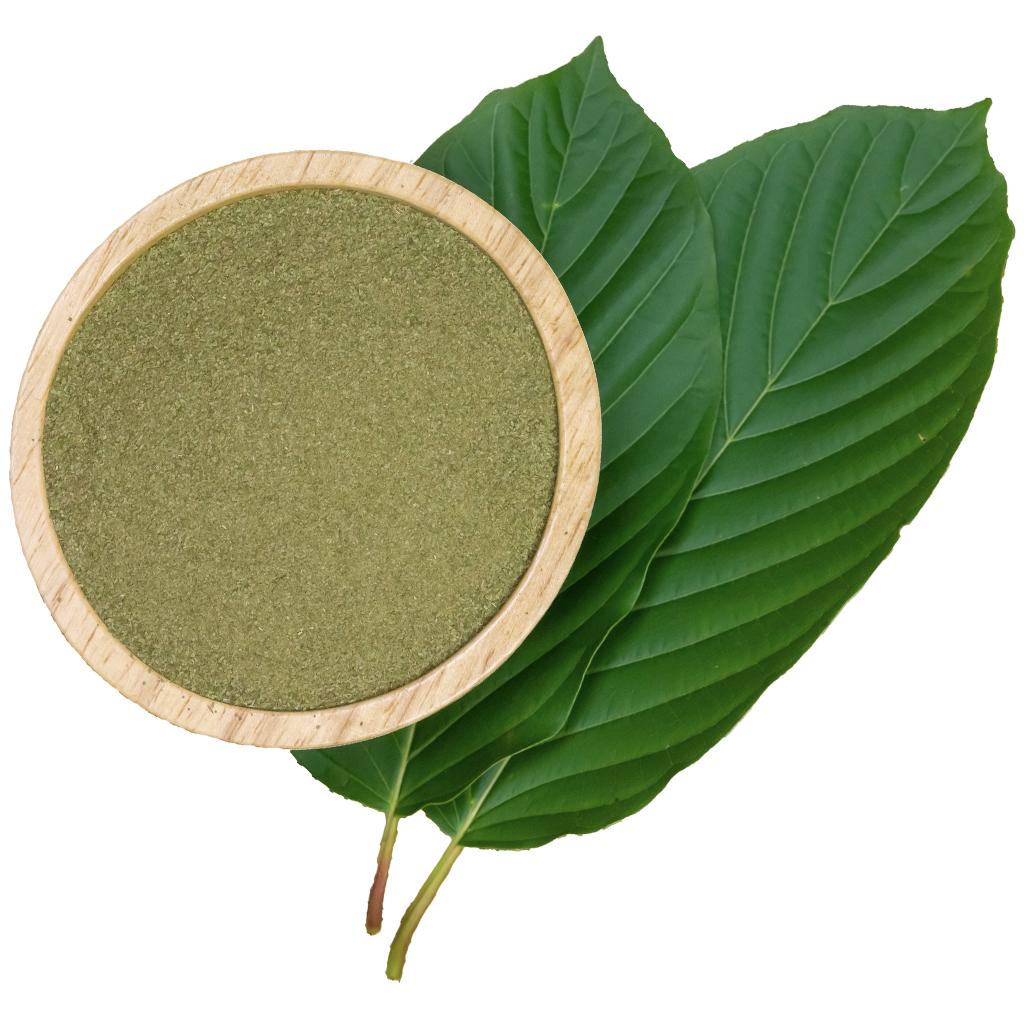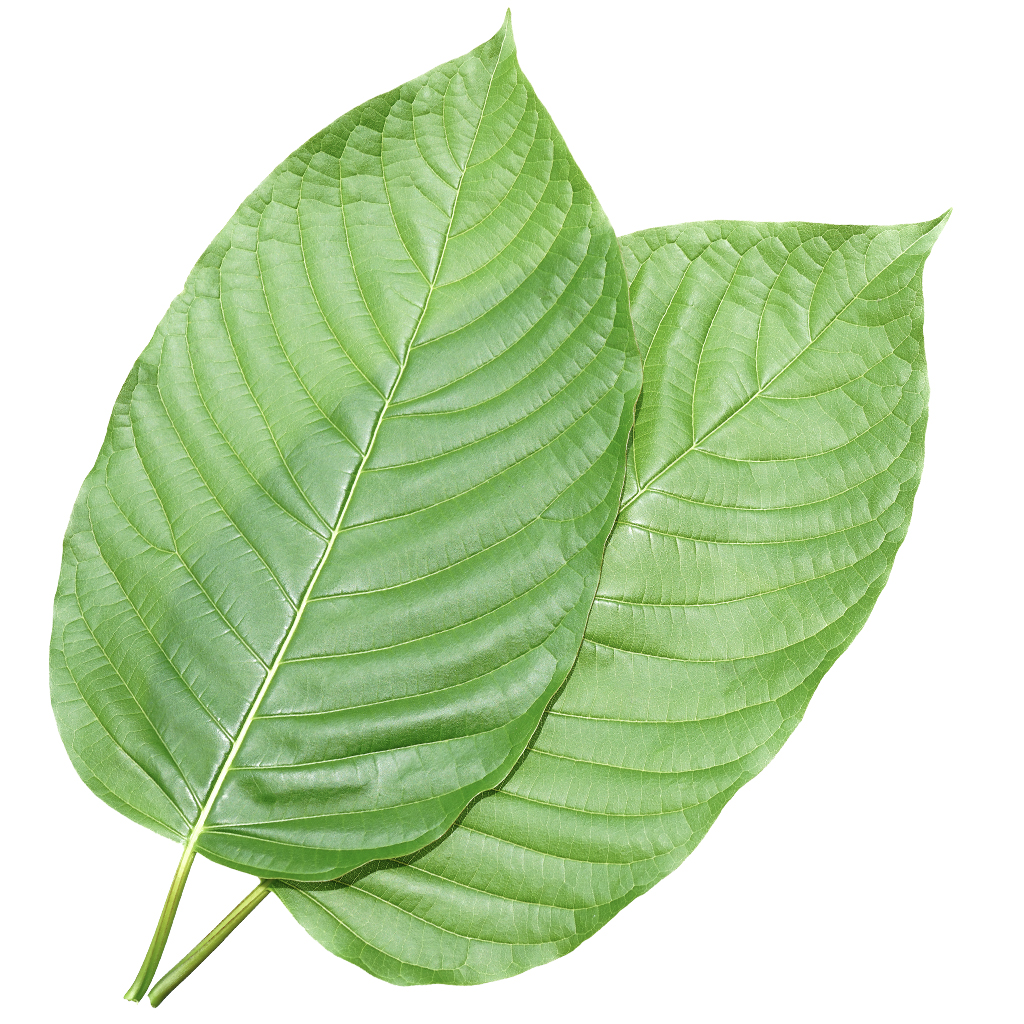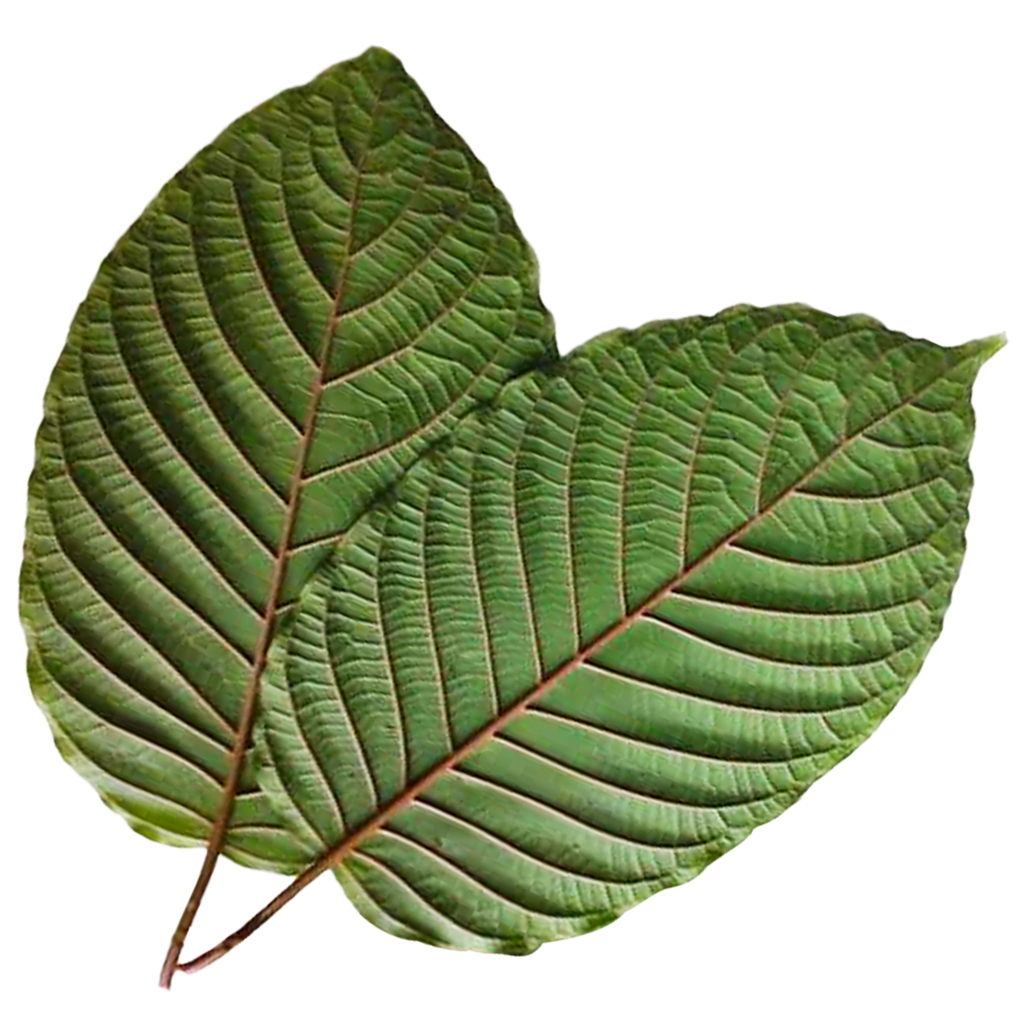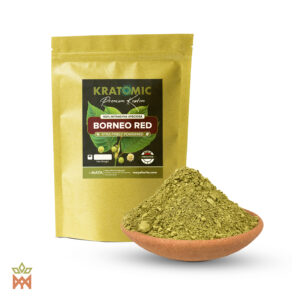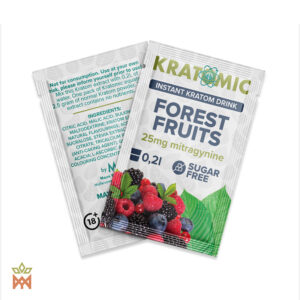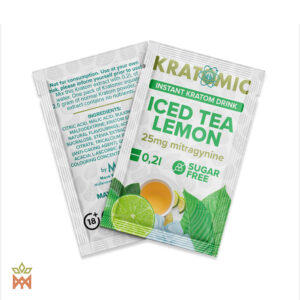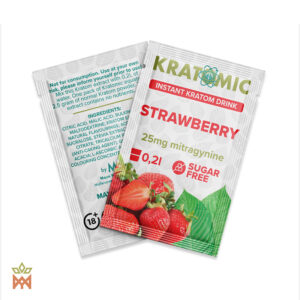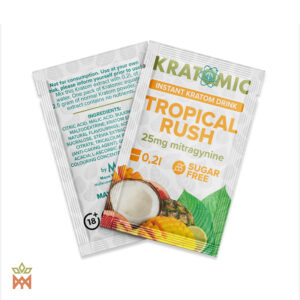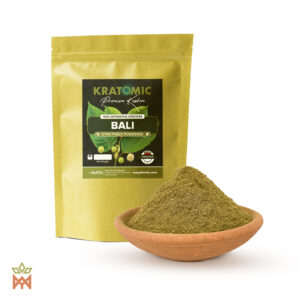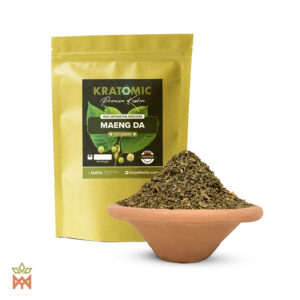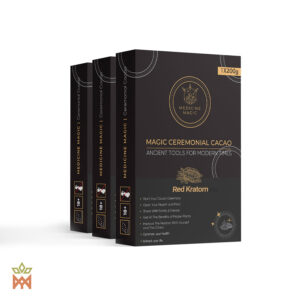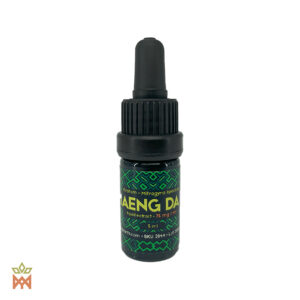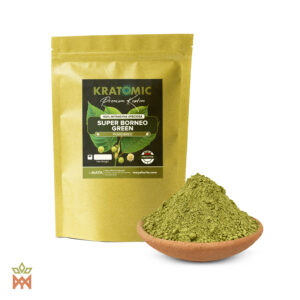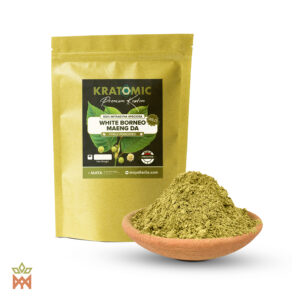
Kratom mitragyna speciosa

View Our Kratom Selection
Showing 1–12 of 21 results
- € 8,75 – € 109,00 Incl. VATSelect options This product has multiple variants. The options may be chosen on the product page
- € 10,30 – € 106,00 Incl. VATSelect options This product has multiple variants. The options may be chosen on the product page
- € 8,75 – € 112,35 Incl. VATSelect options This product has multiple variants. The options may be chosen on the product page
- € 39,75 – € 60,10 Incl. VATSelect options This product has multiple variants. The options may be chosen on the product page
- € 8,75 – € 112,00 Incl. VATSelect options This product has multiple variants. The options may be chosen on the product page
- Rated 5.00 out of 5€ 9,15 – € 117,00 Incl. VATSelect options This product has multiple variants. The options may be chosen on the product page
Showing 1–12 of 21 results

OUR MOST POPULAR PRODUCTS
What is Kratom?
Kratom (Mitragyna speciosa) is a tropical evergreen tree found in several Southeast Asian countries, including Malaysia, Thailand, Indonesia, Papua New Guinea, and Myanmar. Throughout these regions, it’s also known by a variety of local monikers, including Biak-Biak, Gratom, Ithang, Kakuam, Katawn, Kedemba, Ketum, Madat, Mambog, Nauclea, Thang, and Thom.
Kratom belongs to the coffee family (Rubiaceae), and, like its globally loved botanical relative, it’s known for its uplifting and energizing effects when consumed in low doses. Also akin to coffee, the name “kratom” is used for the plant species, its leaves and the powder derived from them, and the tea made from the leaves or their preparations.
Over the last couple of decades, kratom use has broken out of its native cultures and spread far and wide throughout the Western world. This potent potion has been heartily embraced by both recreational users seeking a high-strung buzz and those in need of pain relief, sedation, or help in overcoming addiction.
Similarly, the Western world has seen growing acceptance of other herbal remedies for relaxation and therapeutic use, with cannabis being a prime example. In places like California, a Los Angeles cannabis dispensary can provide plant-based solutions for stress relief and pain management, reflecting a broader trend toward natural alternatives akin to kratom.
However, as in its homelands, kratom use globalization has not unfolded without controversy. While kratom is not an opioid or a psychedelic, it does have psychoactive effects. Likewise, while there’s an abundance of both scientific and anecdotal reports on its therapeutic potential and benefits, it also has abuse potential and a harm profile, whose ascertainment is made difficult due to the frequent consumption of other substances or medications by its users.

Still, with a massive and growing population of kratom lovers worldwide who enjoy its effects and find healing in its use, and with the relatively low number of reports on its dangers, it seems as though moderate kratom use brings vastly more benefits than it does risks.
This is why, in the following sections, we will explore everything you need to know about this powerful plant’s therapeutic and recreational effects, the different strains available and their unique applications, its use both in its native lands and in the Global North, as well as appropriate dosing and contraindications to be aware of.
Traditional Kratom Use
One of kratom’s primary traditional use cases, which persists to this day, is as an energy booster for manual laborers. Similarly to the use of coca in the Andean regions of South America, kratom leaves are chewed throughout the day to enhance work productivity and combat fatigue. They are used by people working in challenging environments, such as farmers, rubber tappers, heavy machine operators, and fishermen.
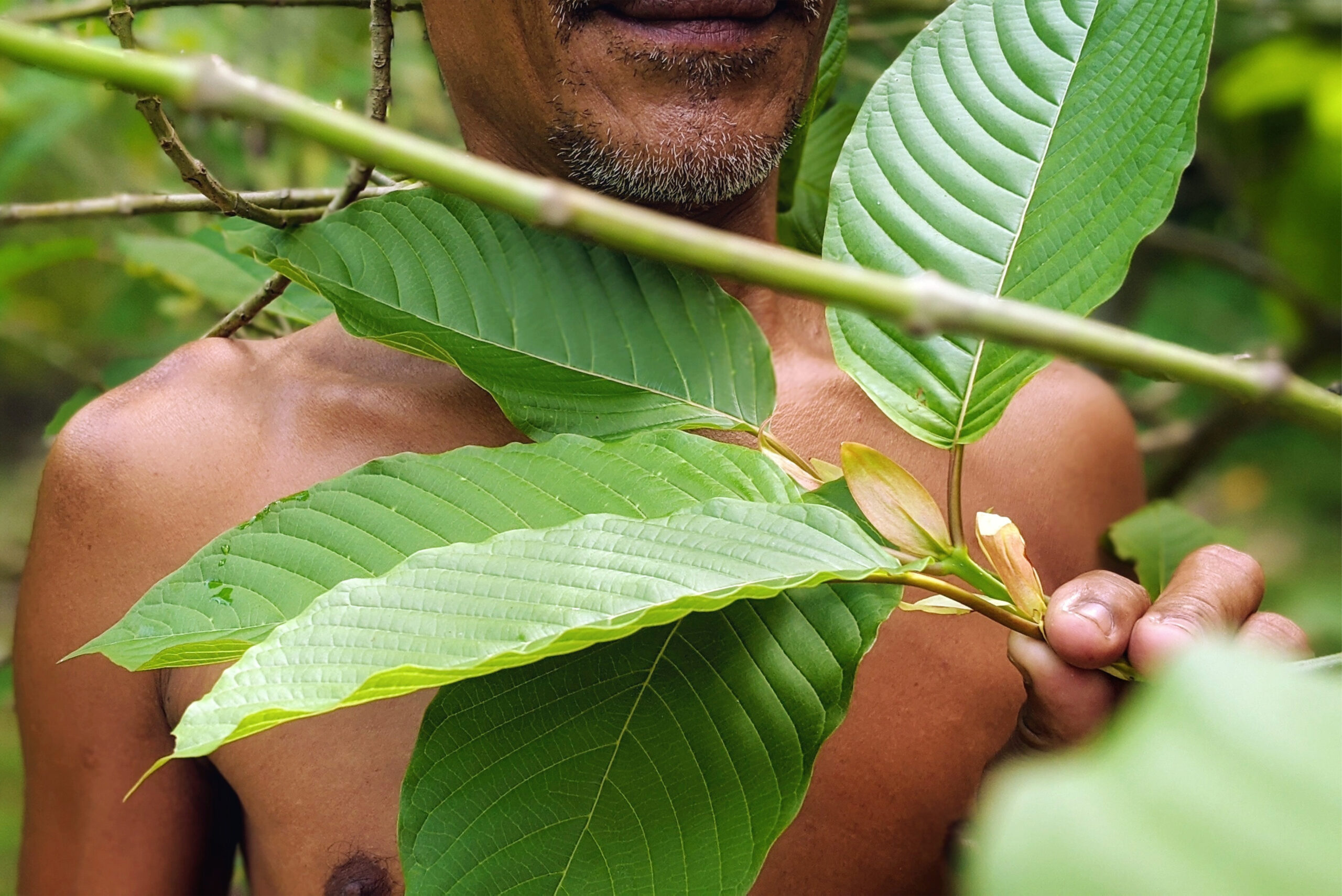
While men tend to use kratom for work and social events, women are known for employing its therapeutic properties to treat a variety of common conditions such as cough, fever, hypertension, diabetes, pain, and anxiety. They would also apply a leaf preparation topically as a wound poultice or administer it orally as a deworming agent and appetite suppressant.
Kratom has also seen some ritualistic use in traditional Thai cultural performances and religious ceremonies, during which it would be offered to spirits and deities in gratitude for fulfilling the villagers’ prayers.

Recent Kratom Use & Its Ambivalent Legality
Between the 1830s and the 1920s, as the opium epidemic gripped Thailand and Malaysia, kratom started being used extensively by opium addicts, serving to help them cope with withdrawal symptoms and overcome their dependence.
During and after World War II, as opium gradually became unaffordable to locals due to its increased demand in the West, the cheap and abundant kratom practically took over as the primary recreational substance throughout the region.
Noticing the increase in kratom consumption (and decrease in revenue from taxable opium sales), both Thai and Malay governments were quick to ban its use — Thailand was the first country to do so in 1943, and Malaysia followed suit in 1952. However, Thailand’s subsequent enforcement of its ‘Kratom Act’ was loose at best, and Malaysia never actually banned the growing of kratom, so use continued unabated over the next few decades.

At the turn of the century, Thailand started strictly suppressing all drug consumption. This crackdown included kratom, which was, by the 2010s, beginning to be used as an ingredient of the notorious ‘4×100’ (‘sii khoon roi’) cocktail in the Muslim communities in the South. A budget-friendly potency upgrade to regular kratom tea, the inclusion of cough syrup also made this brew more addictive.
However, many policy changes have been implemented over the last few years following the succession of the Kingdom’s previous leader. Among them was the de-scheduling of certain psychotropics, such as kratom (2021) and cannabis (2022), which have since then seen rapid development into fully legal industries.
Malaysia, whose kratom stance since 1952 has been only formally critical, has seen pushes to move the plant from the Poisons Act to the less lenient Dangerous Drugs Act. Still, these initiatives would end up short-lived due to the country’s appreciation for kratom as a traditional medicine, lack of any substantial data on its harm profile, and a movement toward a general decriminalization of drugs.
Indonesia never criminalized kratom, but its government announced plans to do so in 2024. Still, stakeholders of a well-developed industry (which produces around 95% of the world’s kratom supply) strongly oppose this idea. With Indonesian policymakers being known for frequently reversing their decisions when faced with public backlash, it is unlikely that kratom production and use will become regulated in this country.
Myanmar criminalized kratom use in 1993 under the Narcotic Drugs and Psychotropic Substances Law, but enforcement has never been a high priority. In the Philippines, where most drug offenses are strictly prosecuted, kratom is fully legal. In most other Southeast Asian countries, to which kratom is also not native, the plant is illegal to possess, but enforcement varies widely depending on the specific government’s stance on psychotropic substances.
Around 1994, kratom was ‘discovered’ by Western consumers, to whom it appears to have been first marketed as a dietary supplement. Over the last couple of decades, its use as both a healing agent and a recreational psychotropic has been on a steady rise, fueled by its abundant availability and affordable prices.
Although localized regulatory movements are happening both in some US states and in several European countries, the plant and its extracts are, by and large, unregulated and available to purchase and ship globally. Even in Australia, where Kratom was banned in 2005, its import and use remain prevalent under the guise of “green tea” or “coffee.”
How Does Kratom Work?
Kratom leaves contain about 45 alkaloids, out of which four are known to be pharmacologically active: mitragynine, 7-hydroxymitragynine (7-OH-mitragynine), speciociliatine, and corynantheidine. Out of these four, mitragynine and 7-hydroxymitragynine are the most studied and best understood.
Mitragynine (MG) makes up approximately 2% of any kratom preparation by mass, but it accounts for 20−60% of the total alkaloid content. MG’s metabolite, 7-hydroxymitragynine (7-HMG), is present in vastly lower quantities in the plant — it makes up about 2% of the total alkaloid content.
Both MG and 7-HMG interact with the μ-opioid receptors in the body, and a portion of MG gets metabolized via CYP enzymes into 7-HMG once ingested. While the difference in the levels of these two alkaloids is significant (10-30x), 7-HMG makes up for it by being about 46x more potent than MG (and 13x more potent than morphine).
MG and 7-HMG’s action on the μ-opioid receptors is analogous to the effect of classic opioids. However, it happens without the recruitment of the β-arrestin-2 protein, meaning that the chemical signals that can cause side effects like respiratory failure aren’t sent out. This unique mechanism results in opioid-like effects but without the associated side effects of opioid and opiate use.
A recent study, which compared oral intake of equally high doses (20-400 mg/kg) of oxycodone and MG in rodents, reported an absence of respiratory depression in the animals that were administered MG. This study implies that kratom carries a significantly lesser risk of overdose than opioids and opiates (by a factor of 1,000) and thus might be a vastly safer alternative.
Most of the remaining alkaloids in kratom have received little scientific attention, but that isn’t to say that they don’t deserve it. A clear example of the surprising therapeutic potential some of them might possess is speciociliatine, which was recently discovered to have anticancer activity.
As far as the pharmacologically inactive alkaloids go, we still don’t understand their role, but it’s assumed that they might contribute to kratom effects in a synergistic manner.
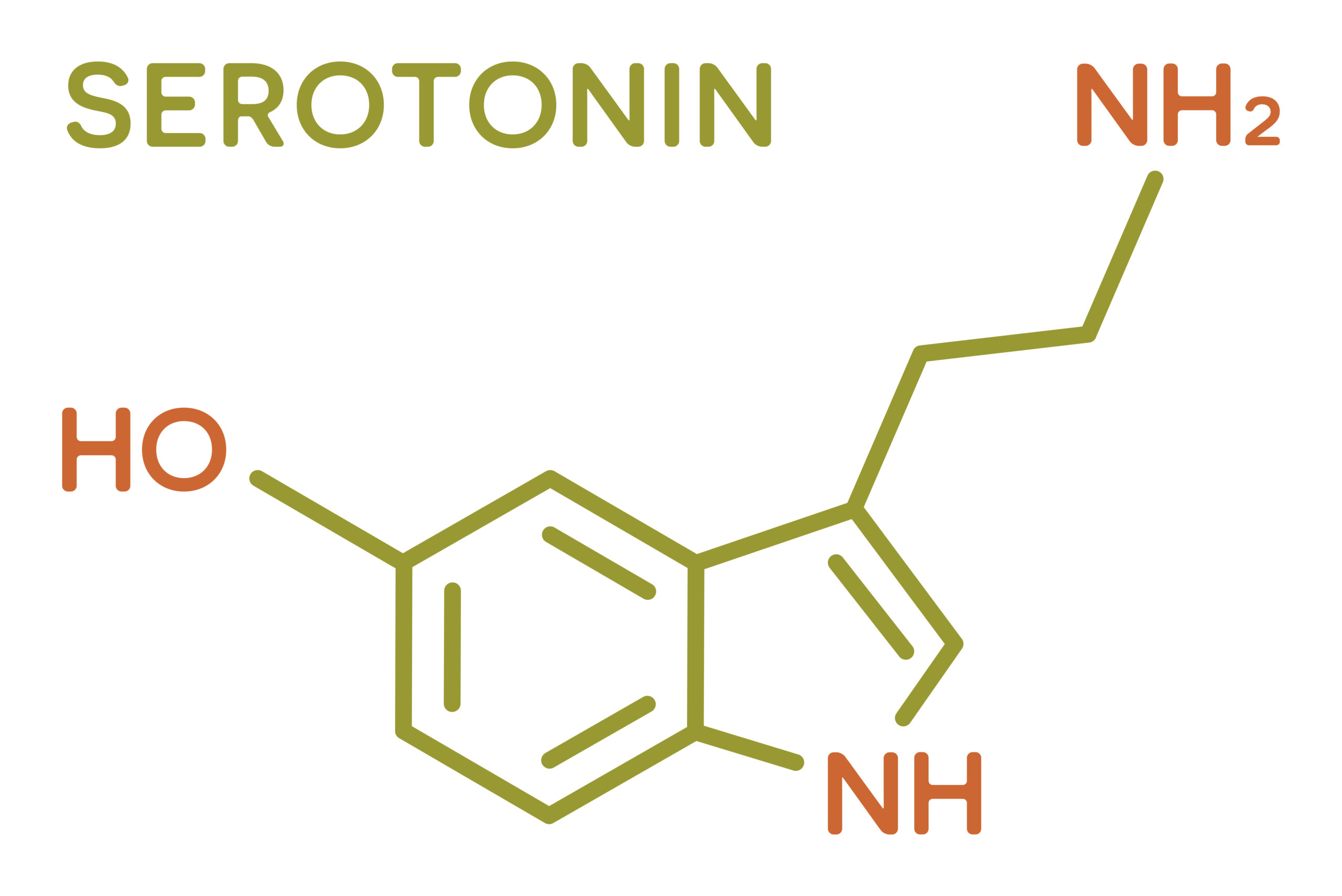
Aside from its interaction with opioid receptors, kratom also acts via the adrenergic and serotonergic pathways, which accounts for its energizing and mood-enhancing properties in lower doses. These effects have been reported to help with a variety of psychological conditions, and further research should produce more profound insights into kratom’s potential therapeutic applications.
How to Take Kratom?
There are several ways to consume kratom; the optimal choice for you will depend on how quickly you want to experience the effects and how much you enjoy kratom’s bitter taste. Here are the most common ways to ingest kratom:
1. Making a kratom tea: Steeping dried kratom leaves or leaf powder in hot water yields kratom tea. Boiling dried kratom is not necessary and may break down the alkaloids. On the other hand, adding a bit of citrus juice while steeping kratom can help extract the alkaloids. Sweeteners such as honey, syrup, or sweetened cocoa powder can be added to mask the tea’s bitter taste. The effects should start a few minutes after drinking.
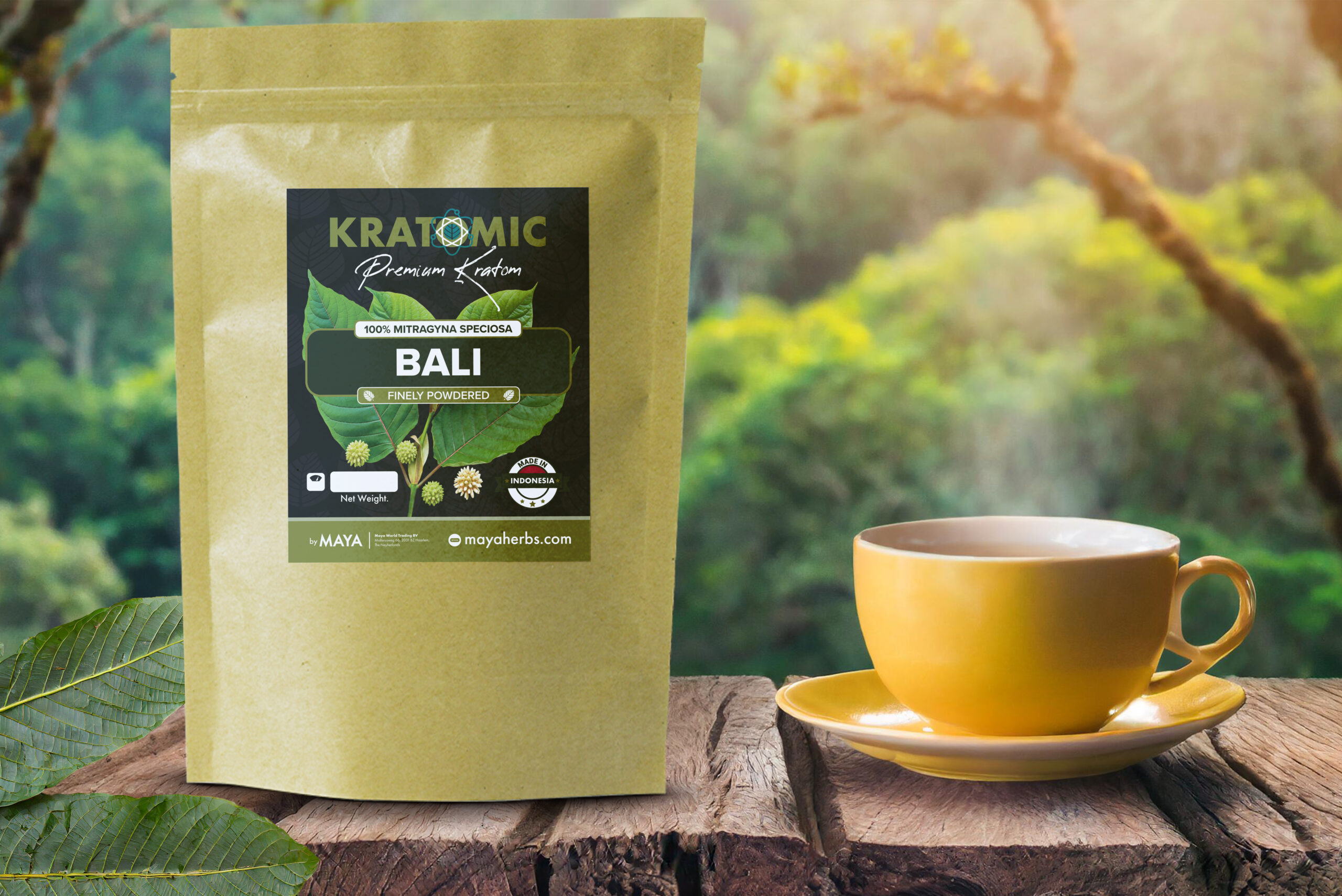
2. Swallowing kratom capsules: The desired amount of kratom powder can be loaded into empty gel capsules or pressed into pills using a tablet pressing machine. This is the best way to avoid the bitter taste of kratom, but the maximum capsule capacity is 1 gram, so, depending on the dose optimal for you, you might need to swallow a number of them for each serving. The effects may start up to an hour after consuming kratom this way as it needs to go through the digestive system to reach the bloodstream.
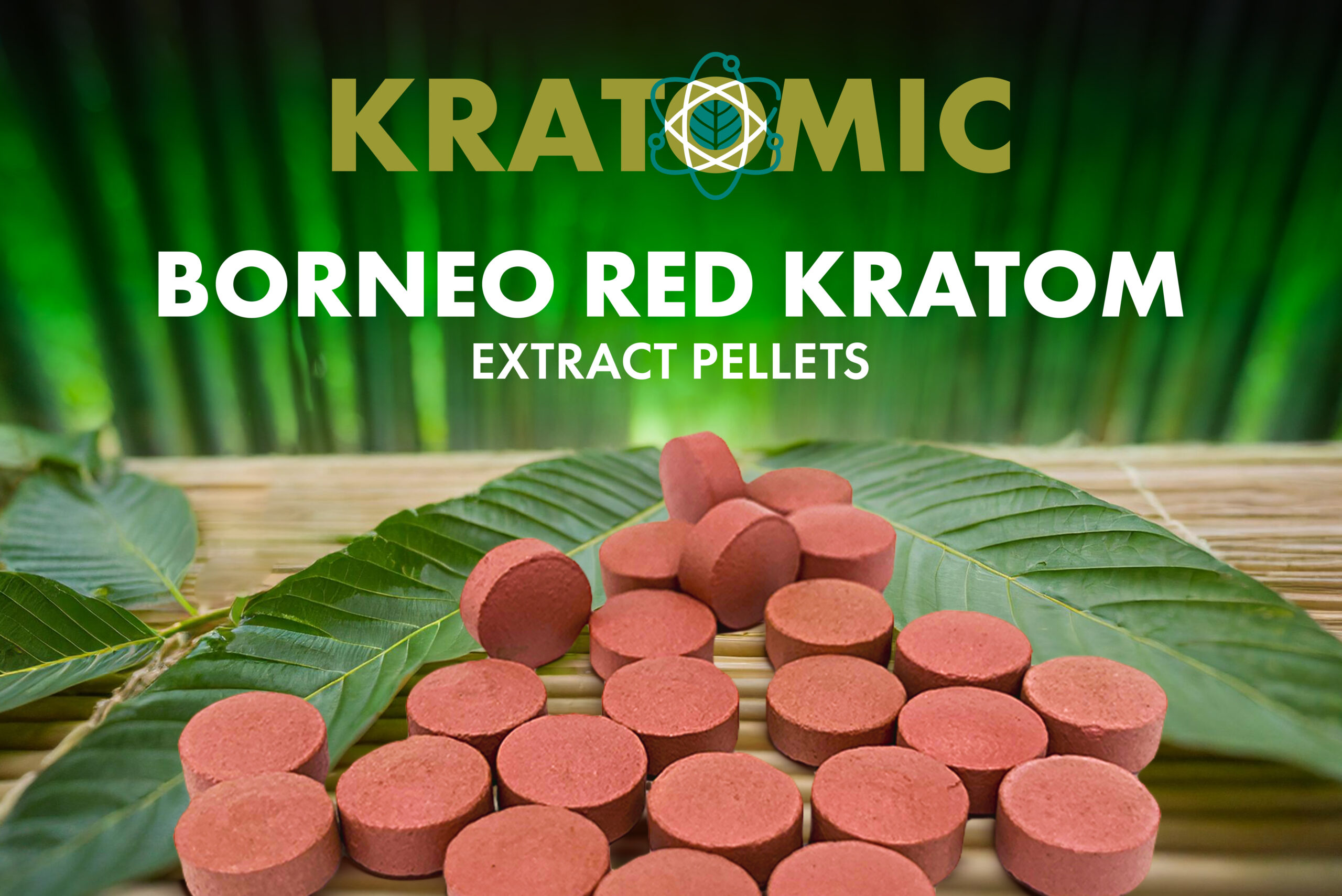
3. Toss & wash: This method involves placing your desired amount of kratom powder at the back of your mouth and swallowing it with water or any flavored liquid to mask the taste. While the intense bitterness of the powder is still felt, the unpleasantness is done away with quicker than when drinking kratom tea. For a more comfortable experience, you can try dissolving the kratom powder in a small amount of liquid, such as chocolate milk or olive oil, before ingestion. The effects start a few minutes after drinking.
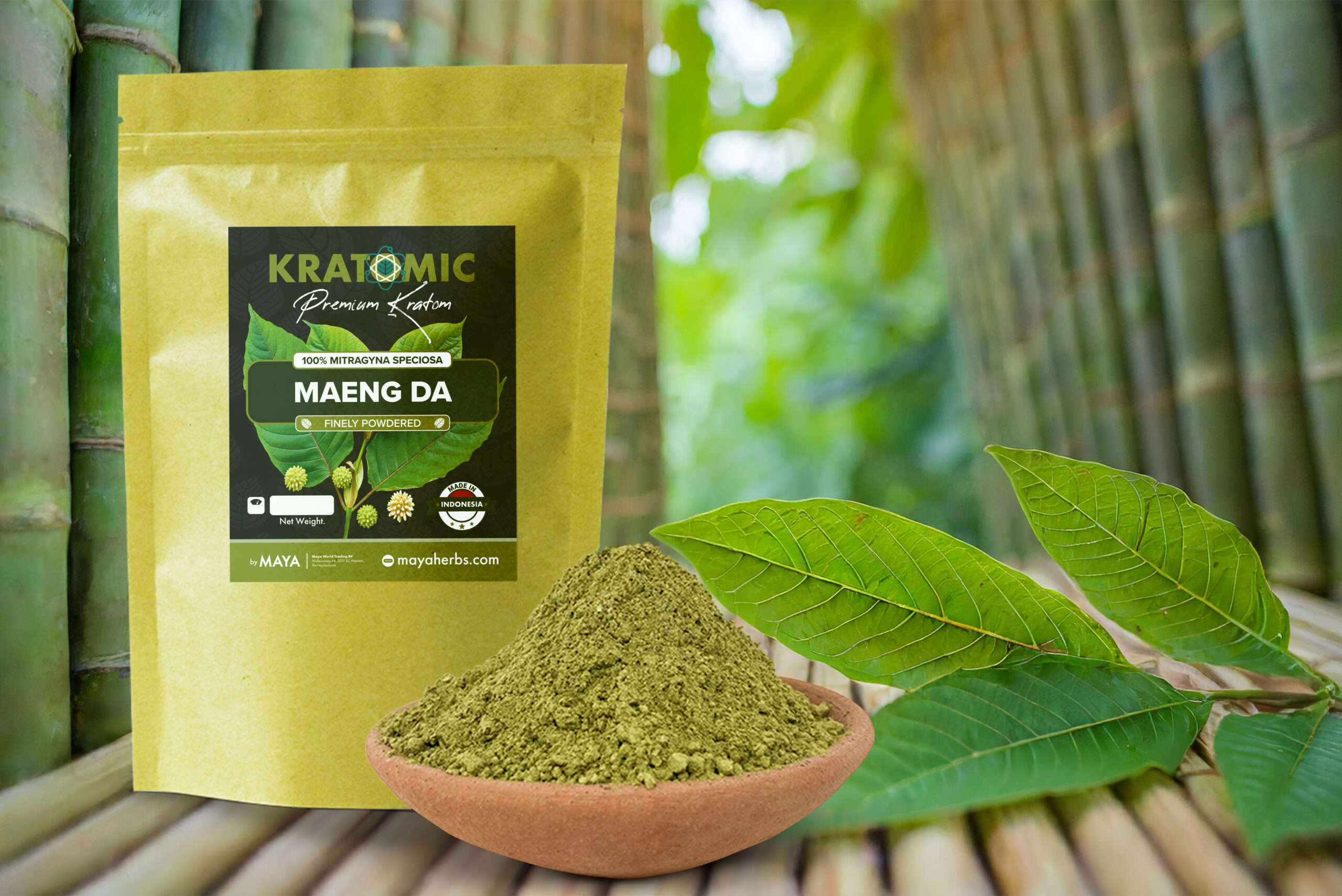
4. Chewing kratom leaves: This is the most traditional way to consume kratom, but one that only works with fresh leaves. Kratom leaves have a potently bitter taste and need to be chewed for a while in order to absorb all the alkaloids through the oral mucosa. The effects should start after a few minutes and gradually increase with prolonged chewing.
Kratom Effects & Dosage
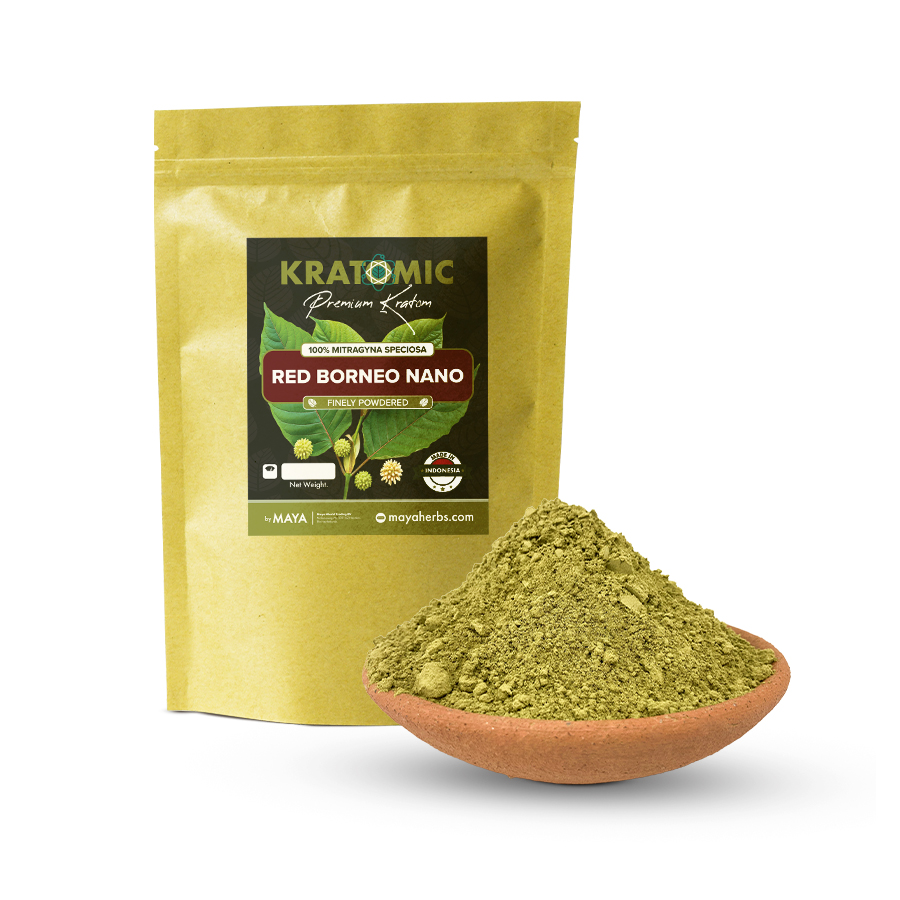
Red Malay: Grown near the Malaysian border in the Indonesian part of Borneo, Red Malay possesses potent pain relief, sedation, and anxiolytic properties. Its effects on anxiety are reputed to be among the longest-lasting of any kratom strain. Due to its intensity, it’s only advised to those with extensive kratom experience, and its powerful sedating properties are not a good fit for those suffering from fatigue syndromes or major depression. The recommended starting point is no more than two grams, and higher doses should be approached cautiously, never exceeding five grams per day.
Red Thai: Originally from Thailand, this strain is now primarily grown in Indonesia. It’s a rare kratom variety well-known and loved for its balanced effects. It creates a harmonious blend of pain relief, sedation, and mood enhancement, and it’s particularly favored by those seeking a calming experience without the extreme sedation associated with some other red-veins. For beginners, starting with a modest dosage of around two grams is recommended.
White Veins
White Maeng Da: Renowned for its stimulating properties, White Maeng Da provides refreshing energy, focus, and prolonged tranquility. This makes the strain quite versatile, as it can boost productivity, enhance mood, lower anxiety, and remove social inhibitions. It can also help with any insomnia after the few hours of heightened alertness it provides. White Maeng Da is a relatively potent strain, so recommendations suggest starting with one to two grams and keeping the daily dose under five grams for optimal results.
White Bali: This white-vein is well known for catalyzing a feeling of joy and a state of optimism, while also reducing anxiety and pain. It’s a balanced strain that works well in relieving both physical and mental tension while preserving alertness and clarity of mind; this makes it an ideal daytime kratom variety. Beginners are advised to start with a modest dose of one to two grams and then adjust gradually based on the effects.
White Indo & White Borneo: These strains stand out from other white-veins in that they can enhance energy levels and physical endurance but also catalyze relaxation and calming effects that can lead users into a good night’s sleep. As a daytime kratom strain, it can provide enhanced focus and a lively and uplifting feeling. As a nighttime strain, it’s great for unwinding and relieving stress accumulated throughout the day. For those new to White Indo, starting with a modest dose of around one to two grams is advisable.
Kratom has a range of effects that vary with dosage and will depend on your weight, metabolism, and the specific strain you choose to consume.
Generally speaking, in lower doses — up to 4 grams — kratom induces euphoria, while in higher doses — 4-8 grams — its opioid-like effects can be felt.
Breaking this down further, we can outline the following dosage recommendations:
● Microdose: 1-2 grams per serving
● Low dose: 2-4 grams per serving
● Moderate dose: 4-6 grams per serving
● High dose: 6-8 grams per serving
The higher the dose (high doses are typically needed for pain management), the higher the likelihood of experiencing side effects. For this reason, it’s recommended to take the lowest possible dose at which the desired effects are achieved.
The duration of effects ranges from 2 to 6 hours, depending on the dose and individual physiology.
WARNING: Consuming upwards of 15 grams of kratom per serving may result in extreme sedation and even loss of consciousness.
The Main Strains
Kratom strains are categorized based on the color of the midribs and veins on the back of the leaves, which is the result of the plant’s maturity, its growing conditions, and the fermentation the leaves go through before drying.
The three most commonly available strains are red-vein, white-vein, and green-vein. While their effects still conform to the general dose-dependent euphoria ←→ sedation spectrum, each of the strains has its zone of excellence:
● Red-vein strains are known for their potent sedative and pain-relieving properties.
● White-vein strains excel as energy and mood boosters.
● Green-vein strains exhibit a combination of effects of both red and white strains.
Going deeper into kratom effects based on the origin of the specific strain, here are some more nuances of the effects typically associated with each one:
Red Veins
Red Maeng Da: Known for its rapid and long-lasting effects, Red Maeng Da offers intense euphoric energy followed by deep relaxation. It is among the most potent kratom strains, considered stronger than both the Green and White Maeng Da strains. Its effects are felt within 10–15 minutes and peak after about 45 minutes. This strain is not for kratom novices but for those seeking powerful pain relief and mood enhancement. The recommended starting dose is one gram.
Red Bali: Despite its name, most kratom cultivators believe this strain originated elsewhere in Indonesia, only gaining popularity when it was brought to Bali. Red Bali is favored for its strong pain relief properties, accompanied by subtle sedation. It’s suitable for treating chronic pain conditions, and beginners should start with low doses of one to two grams. Higher doses may bring out more pronounced analgesic and sedative qualities.
Red Borneo: Cultivated in the Indonesian part of Borneo, Red Borneo is known for its soothing effects, which made it a popular choice for those suffering from depression, anxiety, and PTSD. Its effects overlap with those of the Red Bali strain, with both red-veins offering pain relief and sedation. However, Red Borneo tends to have a more pronounced positive effect on the mood, and its sedation effects are among the most potent of all kratom strains. The recommended Red Borneo dosage is around two grams per day, with seven grams being an upper daily limit.
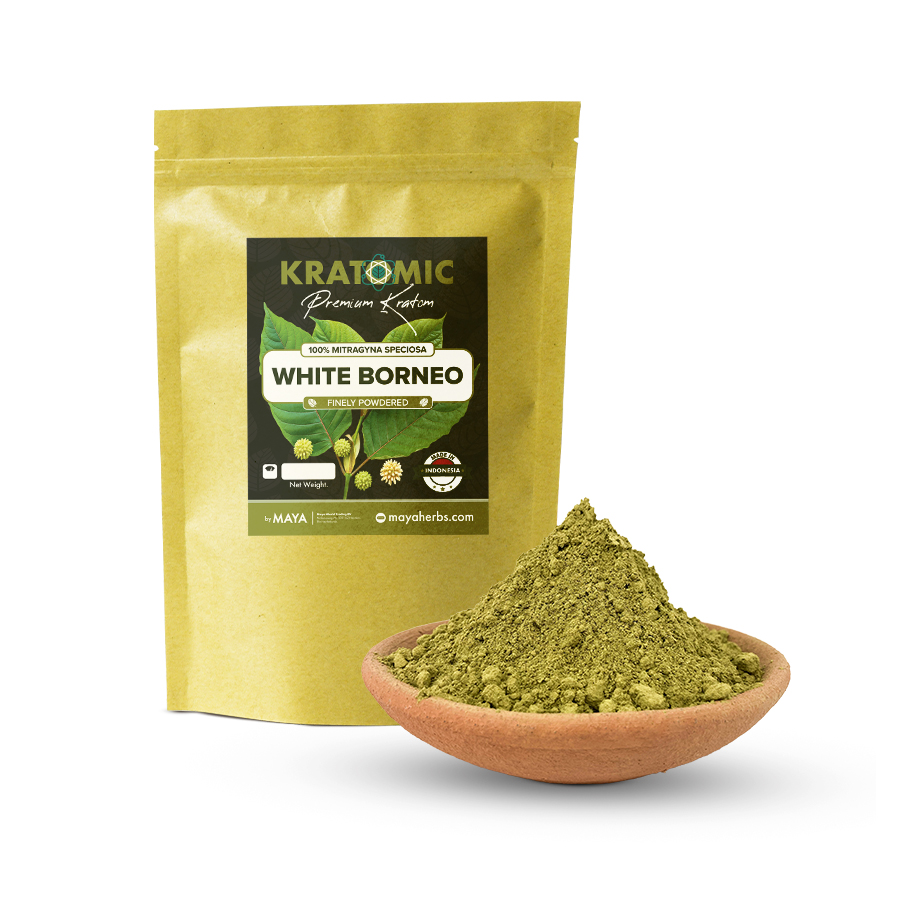
White Malay: Grown in a small area in Indonesian Borneo near the Malaysian border, White Malay offers relentless stimulation and energy throughout the day without any of the jitters associated with caffeine intake. It’s known to provide a noticeable boost in energy and mood within a few minutes, making it perfect for use even during a workday. This strain is recommended for those struggling with fatigue or depression. Dosage recommendations suggest starting with one gram and keeping the daily intake under five grams.
White Thai: Like White Malay, this strain is renowned for its intense stimulation and subtle euphoria, making it an excellent daytime alternative to caffeine. Because it provides a long-lasting boost in neural activity, White Thai isn’t suitable for anyone dealing with paranoia or insomnia. On the other hand, it’s perfect for those struggling with chronic fatigue symptoms or mood disorders. One to two grams should be effective, with five grams considered the daily maximum.
Green Veins
Green Maeng Da: Balancing stimulation and calmness, Green Maeng Da offers a prolonged mood lift and a focus boost, making it ideal for creative work. This strain is widely loved for its ability to enhance alertness and catalyze a stable flow state. The effects can last up to 6-8 hours. Dosage recommendations suggest starting modestly at around two grams.

Green Borneo & Green Bali: These green-vein strains are celebrated for their versatile yet harmonious effects. They catalyze a blend of subtle energy boosts and mild relaxation, making them an ideal choice for socialization or any type of event. Both beginners and experienced enthusiasts can appreciate Green Borneo and Green Bali for their balanced nature. Recommended dosages typically start around two grams.
Green Indo: Green Indo is one of the mildest kratom strains available, with a low chance of causing side effects. Its safe pain-relieving qualities and subtle uplift without any overwhelming effects make it an excellent choice for kratom newbies. With a lower alkaloid content than most strains, starting with a dosage of two to three grams is recommended, gradually increasing to ten grams if needed.
Green Malay: Often referred to as Super Green Malaysian, this strain contains over 40 alkaloids, delivering both significant pain relief and a balanced energy boost. Its benefits also include anxiety relief, enhanced focus and mood, and an improvement in hormonal balance.
Green Malay is quite potent, so starting with one to two grams is recommended. The effects of this strain are typically not immediate, but they provide a long-lasting increase in energy.
Green Thai: Green Thai is popular for its uplifting and energizing effects, which come without excessive jitters. Its stimulation is potent and long-lasting, and the euphoria it catalyzes is subtle, making it a suitable choice for daytime use or socialization. This strain promotes alertness and mental clarity, so it’s typically favored by those dealing with fatigue or seeking increased focus. Beginners are advised to start with a modest dose, around two grams, and adjust based on personal tolerance and desired effects.
Kratom Benefits
In a previous section, we’ve covered traditional kratom use, which harnesses some of this plant’s medicinal properties and its ability to boost endurance and provide energy for a long day of hard work.
Aside from its well-known euphoria ←→ sedation spectrum of effects, in the Global North, kratom is used to treat a range of symptoms, including a variety of chronic pain conditions, alcohol and opioid addiction, various inflammations, insomnia, and a range of emotional and mental disorders.
While there isn’t much in terms of clinical research to back up its potential benefits, testimonials of kratom’s therapeutic effects are abundantly available online. They can be accessed via the American Kratom Association (AKA) website and on various alternative medicine forums and Facebook groups, seen as reviews on many kratom webshops, and even read in big media publications.
Despite myriads of anecdotal reports of its benefits, kratom has, up until recently, had the scientific and policy-making communities divided due to the lack of sufficient scientific evidence of its safety and a growing body of reports focusing, conversely, on cases of adverse effects, overdoses, and deaths.
However, over the last few years, it’s become clear that these reports represent, by and large, isolated, rare cases. Many, if not all of them, also fail to attribute the purported damage to kratom itself due to the common presence of other, typically more harmful substances identified in the examined individuals.
With all that in mind, this section aims to cover most of the potential kratom benefits science currently has evidence of, or at least indications for. Then, in the following section, we will look at some of the frequently cited kratom risks and side effects.
Kratom for Pain & Inflammation
Among the main reasons behind kratom’s global popularity is its well-documented ability to relieve pain. Scientific evidence of the analgesic effects of MG on both inflammatory pain (1, 2) and neuropathic pain (1, 2) is undeniable and thoroughly discussed in this 2022 research review.

A 2020 study was the first to detail the mechanism of kratom’s pain-relieving action — it reported that MG successfully reduced chemotherapy-induced neuropathic pain in rats by stimulating α-adrenoceptors. This study was also the first one to reveal that kratom also impacts the adrenergic system.
Commonly sought-after strains of kratom for pain & inflammation relief include: Maeng Da Red and White Veins and Bali Red Vein.
These are among the most potent kratom strains, so low doses of around 2 grams should be sufficient for treating pain. The effect should last for 4-6 hours and should help with conditions such as chronic backache, rheumatoid arthritis, osteoarthritis, osteoporosis, osteomalacia, joint pain, and others.
Kratom for Addiction
In a landmark study from 2018, MG was shown to reduce self-administration of heroin in rats. However, this effect was found to be insignificant for methamphetamine. A 2019 study looked at the effects of both MG and 7-HMG and reported that, while MG helped decrease morphine self-administration in rats, 7-HMG actually increased it.
These two studies indicate that MG might be able to help reduce opioid dependence and that the compound itself has low to no abuse potential; however, 7-HMG, which is present in Kratom in much smaller quantities than MG (1:10-1:30, depending on the strain), appears to be an addictive substance which might also promote dependence on other substances.
While it’s good news that levels of 7-HMG in kratom are significantly lower than those of MG, it’s important to underscore that some of the MG introduced into the body does get metabolized into 7-HMG, as well as that 7-HMG has a significantly greater affinity for opioid receptors compared to MG (about 46x higher). This means that consuming kratom produces a complex chemical synergy of compounds that both interrupt and enforce addiction at the same time.
The 2019 study mentioned above also reported that 7-HMG dependence was more susceptible than morphine to treatment with classic anti-addiction pharmaceuticals such as methadone and buprenorphine. This finding implies that the trade-off of forming a dependence on kratom as a means of breaking an addiction to opioids might be worth it, as the kratom dependence should be significantly more manageable.
A few more recent studies reported that MG helps reduce addiction to alcohol (1, 2) and methamphetamine. Finally, two studies from 2020 (1, 2) found that MG also helps attenuate morphine withdrawal symptoms in rats while improving the animals’ cognitive processes and without generating anxious behavior.

Over 3,000 Kratom users participated in an online survey in 2017, the results of which provided strong anecdotal support for its effectiveness against addiction. The study reported that “over 90% of respondents who used [kratom] in place of opioids indicated that it was helpful to relieve pain, reduce opioid use, and relieve withdrawal.”
The positive anti-addiction effects kratom users reported in this survey included: mood enhancement, appetite and sleep regulation, reduction in pain, anxiety, cramps, nausea, vomiting, and the craving for the abused substance.
Commonly sought-after strains of kratom for addiction treatment include: Bali Red, Maeng Da, Green Thai, Green Malay, and Sumatra Red.
Dosages of kratom for addiction recovery are highly individual and not possible to recommend.
Kratom for Energy, Focus, Mood Regulation, and Anxiety
Another widely reported effect of kratom, specifically when taken in low doses, is its stimulant effect, which typically occasions a subtle euphoria, improved mood, and a boost in energy and focus. It’s assumed that these effects are the compound result of:
● Its adrenergic action — by raising levels of noradrenaline, kratom increases alertness and arousal, speeds up reaction time, enhances energy levels, and sharpens concentration.
● Its serotonergic & dopaminergic action — by boosting levels of serotonin and dopamine, kratom achieves its anxiolytic, antidepressant, and stress-mitigating effects, which, in turn, produce an upswing in mood, paving the way to heightened focus.

Commonly sought-after strains of kratom for energy, focus, mood, and anxiety are: Maeng Da Red, all Bali strains, Green Malay, Borneo and Indo Red, Thai White, and Sumatra White.
Depending on the strain’s potency, doses between 1 and 4 grams should be sufficient for achieving stimulating and mood-boosting effects.
Kratom for Insomnia and Sleep Regulation
At higher doses, most strains of kratom have a sedative effect. This sedation can be leveraged against sleep issues and insomnia. Additionally, kratom’s anxiolytic, stress-relieving, and analgesic effects can aid those whose sleeplessness stems from worry or pain.

However, due to the higher doses needed for sedation, both kratom side effects and kratom addiction become more likely, so it is not recommended to use kratom frequently for this purpose.
Commonly sought-after strains of kratom for insomnia are typically Red Veins, especially the Red Thai and Red Maeng Da varieties.
Recommended dosages are on the higher end and will vary based on the potency of the strain, weight, and personal experience with kratom — generally, around 3 grams should suffice for beginners, while up to 5 grams is suitable for more experienced users.
Kratom as an Antioxidant and Anticancer Agent
Many of the biological processes behind ageing and disease formation are collaterals of cell oxidation. Because of its high metabolic activity and vulnerability to ischemic damage, the brain is especially susceptible to oxidative stress; most neurodegenerative diseases can be traced back to this process.
In a 2014 in vitro study, MG has been shown to have concentration-dependent cytotoxic, moderate antioxidant, and profound antiproliferative effects. This means that, at least outside of the body, kratom appears to help cell preservation by impeding proliferation and oxidation, and that it even attacks certain kinds of cancerous cells.
Another study from 2020 reported that an “ethanol extract of kratom leaves had antioxidant activity in a very strong category,” and one from 2021 found that MG can inhibit the enzyme acetylcholinesterase (AChE), which is involved in the progression of Alzheimer’s disease.

Then, in a landmark study from 2021, four kratom alkaloids — MG, speciociliatine, paynantheine, and speciogynine — showed weak to moderate in vitro inhibition against the proliferation and migration of nasopharyngeal carcinoma cells.
Far more research is needed to replicate and further explore these effects, but the results of these studies are promising.
Kratom for Gastric Issues
A 2008 study conducted on rats showed that kratom extract had a dose-dependent (all high doses) antidiarrheal effect and slowed down the movement of food through the intestines, allowing for better digestion and absorption of nutrients. These effects are similar to those of morphine and are presumably the result of both substances’ action on gut opioid receptors.

A study from 2018 found that a high-dose extract of MG had gastroprotective effects on rats, significantly reducing their gastric ulcer index. This research posits a scientific basis for one of the oldest traditional medicinal use cases for kratom.
Kratom as a Cough Suppressant
In animal studies, cough-suppressant effects of mitragynine were found to be comparable to those of codeine. This kratom benefit also aligns with traditional forms of the plant’s use. However, it appears that high dosages are needed to elicit antitussive effects, so, just as with cough syrup, the potential for abuse is present.

Kratom for Immunity
Multiple studies have concluded that the combination of reported Kratom benefits, including its antiproliferative, antidiabetic, antioxidant, and antibacterial effects, as well as its anti-inflammatory effects and ability to inhibit vascular permeability, adds up to an overall positiv HYPERLINK “https://www.ncbi.nlm.nih.gov/pmc/articles/PMC5402527/”e effect of this plant on the immune system.

Kratom Risks & Side Effects
As we’ve already outlined, long-term consumption of higher doses of kratom can lead to kratom dependence. However, as we’ve also noted, this dependence typically involves much more modest withdrawal symptoms than classic heavy drug addictions, resolves itself within three days, and is more responsive than morphine to classic anti-addiction pharmaceuticals.
More concerningly, a limited number of studies have reported risks of certain health issues as a result of kratom use, including: skin pigmentation, pulse and BP increase, prolonged QTc interval, cardiac arrest, liver and kidney damage, hypogonadism, visual episodic memory and learning deficits, and heightened cholesterol levels.
A number of published reports have also examined cases of acute kratom intoxications and overdoses leading to dangerous conditions such as serotonin syndrome, septic shock, muscle tissue breakdown, hearing loss, and heart failure, ischemia, psychosis, paralysis. A few cases even resulted in fatalities (1, 2).
However — and this is a big however — most of these cases, especially the extreme ones, are 1) rare, with only 1% of this 2017 survey responders reporting that they had sought medical or mental health treatment, and 2) invariably impossible to attribute directly and solely to kratom as the examined individuals typically have multiple substances — whether illicit drugs or prescribed pharmaceuticals — in their system at the time of intervention.
Kratom is both relatively new to science and extremely chemically complicated and underresearched. As such, interactions of its alkaloids and psychoactive, recreational, and prescription drugs (which are often used concomitantly with kratom) are poorly understood and can lead to tragic results, as listed above.

WARNING: Additionally, since kratom products are not regulated by any governmental body in charge of controlling the safety and quality of dietary supplements imported into their countries, there is little oversight of kratom production and packaging processes and practices worldwide. As such, accidents involving adulterants and contaminants such as microbes and toxic metals have also been reported — these incidents have wreaked a lot of havoc and are partly to blame for kratom’s global notoriety.
This is why it’s of utmost importance to purchase kratom products exclusively from trusted, verified, and reputable vendors. Browse our webshop now to buy safe, potent, and fairly sourced kratom products.
Setting aside the rare, serious risks that come with excessive kratom use, combining kratom with other substances, or purchasing kratom from unvetted suppliers, the science available is sufficient for confidently stating that moderate (both in dose and duration) use of unadulterated/uncontaminated kratom while under the effect of no other heavy drug is most likely safe and unlikely to lead to addiction or harm.
With that in mind, some of the common side effects of moderate kratom use, which have been reported by 13% of the responders in this 2019 survey, are typically mild and rapidly self-resolving. They are more likely to be experienced on higher doses and with frequent use, and they include:
- Nausea
- Constipation
- Vomiting
- Drowsiness
- Irritability
- Agitation
- Headache
- Runny Nose
- Watery Eyes
- Weight Loss
- Insomnia
- Dehydration
- Excessive Thirst
Potentiating Kratom
In order to maximize the beneficial effects of kratom, you can try some of these anecdotally sourced potentiation techniques:
● Antacids: Consume up to 3 grams of antacids about an hour before taking kratom to potentiate its effects. Antacids raise the pH level in the stomach, potentially enhancing kratom absorption.
● Turmeric and Black Pepper: Take 7 grams of turmeric and a pinch of black pepper approximately an hour before consuming kratom. Turmeric binds with kratom alkaloids, and black pepper activates it. Curcumin and piperine, their active compounds, both slow down the metabolism of kratom alkaloids, potentially increasing the potency and duration of kratom effects.
● Grapefruit or any citrus juice: Drink a large glass of grapefruit or any other citrus juice around 2 hours before taking kratom. Grapefruit juice, a CYP3A4 enzyme inhibitor, can enhance drug absorption, which might potentiate kratom effects.
● Watercress: Eat some watercress about 45 minutes before consuming kratom. Watercress is a CYP2E1 enzyme inhibitor similar to grapefruit — it may improve drug absorption and thus enhance kratom effects.
● DXM (Dextromethorphan): Take 30-60 mg of DXM approximately 45-60 minutes before ingesting kratom. DXM is believed to potentiate kratom effects, possibly explaining its combination with cough syrup invented in Southern Thailand.
● Freeze your kratom: Mix your kratom powder with water and an acidic liquid, such as any citrus juice, to create a paste. Put the paste in an airtight container, then place it in the freezer for 30 minutes. Thaw and then combine with water, juice, or tea. Freezing kratom can break down the cell walls within the plant matter, catalyzing a quicker release of alkaloids after consumption.
How to Store Kratom
Proper kratom storage means keeping the powder in a cool, dark, and dry place, ideally in a fridge, packed in an airtight container.
Where to Buy Kratom
Here at Maya Ethnobotanicals, we offer a range of traditional medicinal plants which have been used by indigenous peoples for a variety of purposes since ancient times.
Our products are organically grown, sustainably harvested, and sourced through fair trade, and we sell them with the intention to promote ethnobotanical enthusiasm throughout the world.
We do not advocate for the use of any of our products in illegal ways, nor do we ship any of our botanical samples to countries where they are illegal. We advise our customers to inform themselves thoroughly about their local regulations before placing an order.
If you’re looking for kratom for sale, you may purchase many different strains from our webshop: Buy kratom

